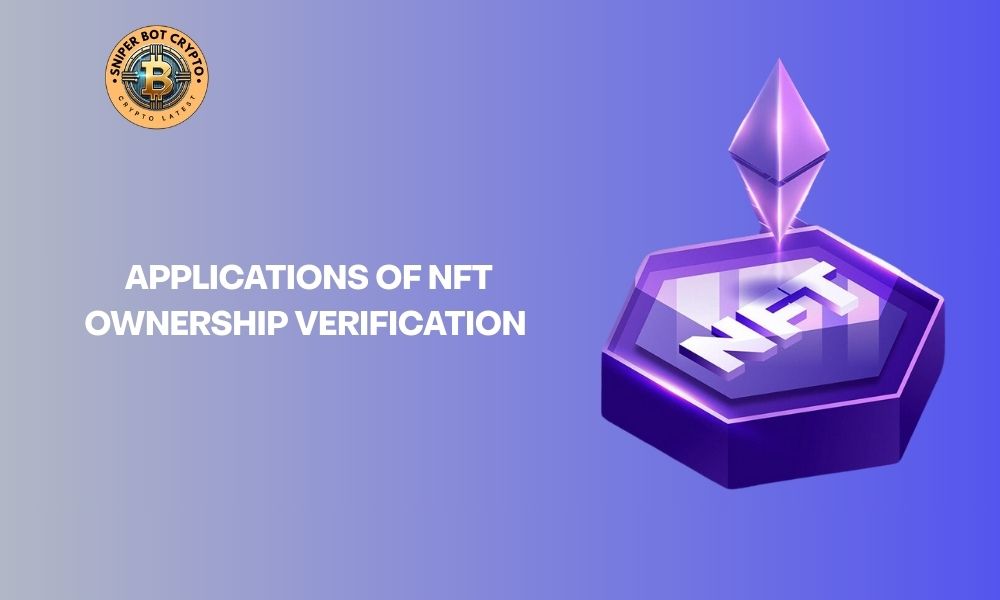In the booming era of blockchain technology, NFT ownership verification has emerged as a key element ensuring transparency and security in digital asset transactions. With NFTs valued at millions of dollars, verifying ownership not only protects investors but also builds trust within the community. This article will explore the importance of verification in detail and provide practical guidance to help you navigate the NFT space with confidence.
Contents
Why NFT ownership verification matters?

NFT ownership isn’t just about financial value, it’s also about ensuring transparency and protecting digital assets in a decentralized ecosystem. As NFT marketplaces expand and become more accessible, NFT ownership verification serves as a foundational layer for trust and reliability. It verifies that a user is the true holder of a digital asset, reducing disputes and enabling smoother peer to peer transactions. In a market driven by digital scarcity, authentication is key to maintaining legitimacy and long-term value.
By verifying ownership, users can avoid falling victim to scams or purchasing fake copies of NFTs. Fraudulent listings are still a common issue in many platforms, making verification protocols essential for investor protection. Blockchain verification tools and on-chain data help buyers confirm that what they’re purchasing is original and properly registered. This is especially vital in high value NFT trades where the financial stakes are significant.
Beyond security, ownership verification also plays a role in reinforcing community confidence in NFTs and the blockchain space as a whole. When users trust that assets are authentic and traceable, they’re more likely to participate and invest. This drives adoption and encourages innovation across NFT related projects, from art and collectibles to gaming and real estate. In short, verifying ownership is not just a technical process, it’s the backbone of a secure and growing digital asset ecosystem.
NFT ownership verification process
To ensure the authenticity and rightful ownership of digital assets, NFT ownership verification involves a few essential steps. These steps help both buyers and creators prove possession, track asset history, and avoid fraudulent transactions. Below are the core processes that play a role in verifying NFT ownership effectively.
- Check blockchain wallet address: NFTs are tied to specific wallet addresses on the blockchain. Users must provide the associated wallet address, which can be cross checked on chain to confirm current ownership status.
- Verify through smart contracts: Smart contracts store the key data of each NFT, including the original creator, current owner, and complete transaction history. Reviewing this contract ensures the asset’s origin and legitimacy.
- Use third party platforms: Several platforms now offer ownership verification services that streamline the process. These tools pull data from the blockchain and present it in user friendly formats, allowing for faster and more reliable checks.
Technologies supporting NFT ownership verification
At the core of NFT ownership verification is blockchain technology, which provides a decentralized and immutable ledger. Every transaction involving NFTs is recorded on chain, allowing users to trace the origin and full ownership history of any token. This transparency reduces the risk of fraud and ensures that the asset’s provenance is publicly verifiable. Platforms like Ethereum, Solana, and Polygon are widely used due to their robust support for NFTs. With this foundation, users can confirm ownership with just a wallet address.
Smart contracts also play a vital role by automating the verification process. When someone purchases or transfers an NFT, the smart contract updates ownership on the blockchain without needing third party approval. This ensures accuracy, consistency, and eliminates the need for manual intervention. These contracts also contain rules that protect intellectual property and manage royalties. Their autonomous nature makes NFT transactions secure and reliable.
Finally, APIs and data analytics tools enhance access to ownership records and asset metadata. These tools allow marketplaces, developers, and collectors to fetch real time information about NFT assets quickly and efficiently. From wallet histories to token authenticity, everything can be verified in seconds. This not only improves user experience but also helps build platforms that are more trustworthy. Together, these technologies make ownership verification seamless and scalable.
Practical applications of NFT ownership verification

NFT ownership verification has expanded its use to various sectors beyond digital art and gaming, offering security and transparency in several industries. In the world of fashion, brands are integrating NFTs for verifying the authenticity of luxury items, such as clothing or accessories. By issuing an NFT for each piece, the item’s ownership and authenticity can be easily tracked, preventing counterfeiting and ensuring consumers are purchasing genuine, high-quality products. This approach also creates new opportunities for brands to engage with customers through exclusive digital ownership experiences.
In real estate, ownership verification is being explored as a way to tokenize property rights, enabling fractional ownership and simplifying the transfer of assets. By issuing NFTs tied to physical properties, the process of buying, selling, and transferring ownership can be streamlined, reducing paperwork and eliminating the need for intermediaries. This innovation could democratize real estate investment, making it more accessible and efficient, while also providing a transparent record of ownership that enhances security for both buyers and sellers.
Challenges in NFT ownership verification
Despite its benefits, NFT ownership verification faces several real world challenges. One of the most pressing issues is the risk of hacks and scams through fake platforms, where users may unknowingly connect their wallets and lose their assets. Additionally, the complexity of blockchain technology itself can be overwhelming for non-technical users, making it difficult for many to verify ownership accurately or securely.
Another major concern lies in the lack of legal clarity surrounding digital ownership across different countries. Jurisdictional differences in how NFTs are defined and regulated can create confusion and loopholes. This legal grey area poses a risk for both creators and buyers, especially when disputes arise over intellectual property or transaction legitimacy on the blockchain.
NFT ownership verification is not just a technical tool, but a crucial element for ensuring the sustainable growth of the NFT market. By understanding the verification process and its real-world applications, users can make the most of their digital assets while staying protected against potential risks. As a trusted source of crypto and blockchain insights, Sniper Bot Crypto provides valuable information to help you navigate the evolving world of NFTs with confidence.
